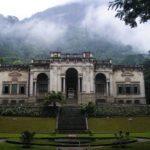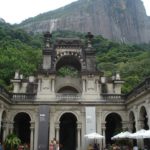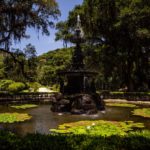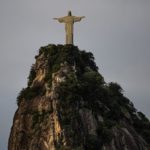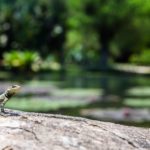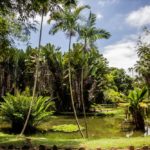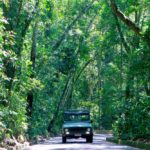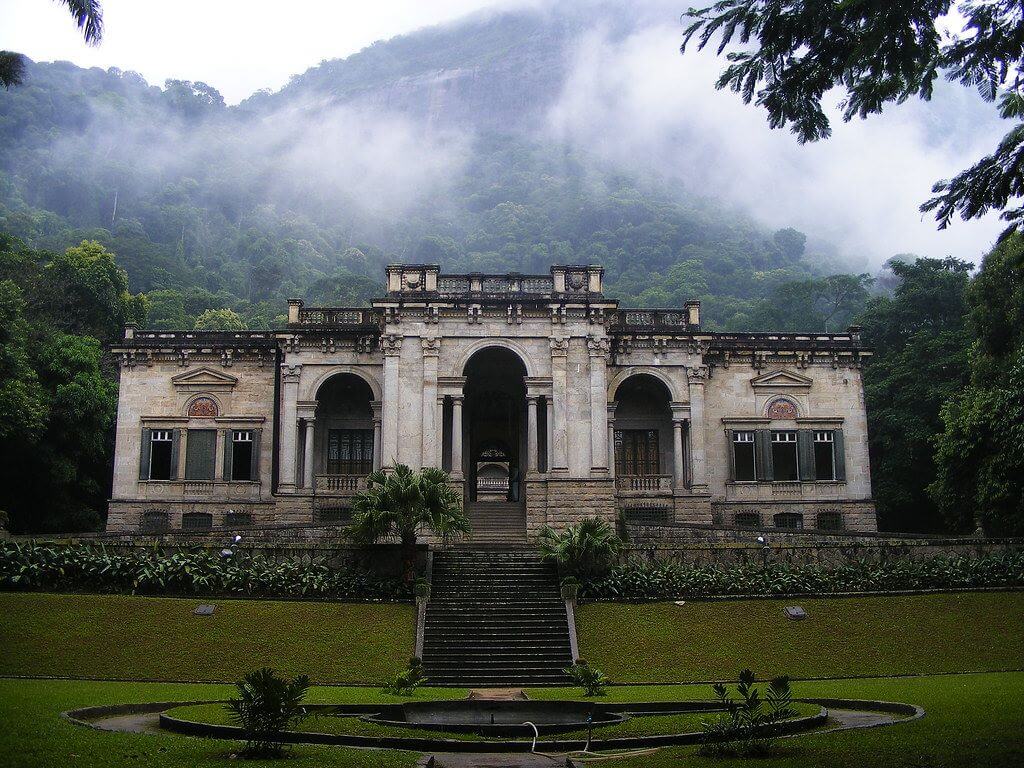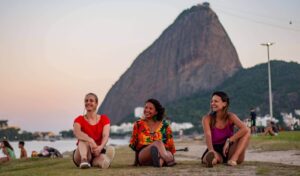RIO DE JANEIRO PARKS
In times of social distancing, outdoor life has never been more fashionable
What is not lacking in Rio is an option in the open air. Full nature is present throughout the city, which has numerous parks and gardens, public spaces in general dedicated to the connection with nature. Find out which parks to know in Rio de Janeiro!
TIJUCA NATIONAL PARK
Tijuca National Park has an area of 3,958.47 hectares and covers about 3.5% of the municipality area. It is the most visited national park in the country, with approximately 2 million visitors per year. It crosses the city from end to end, and, because it has no continuous territory, is mixed with the urban area of the city. The park is divided into four sectors: the Tijuca Forest Sector, which includes Tijuca Forest, Pico da Tijuca, Pico Tijuca Mirim, Pico Andaraí Maior, Pico do Papagaio, Mirante do Excelsior, Cachoeira das Almas and Cascatinha Taunay; the Serra da Carioca Sector, with Parque Lage, Morro do Corcovado and Vista Chinesa; the Pedra Bonita/Pedra da Gávea Sector, which groups Pedra Bonita, Agulhinha, Pedra da Gávea and Ramp Free Flight; and the Sector Black Liners / Covanca, with serra dos Pretos-Forros and Covanca. This park is extremely important for the city, as it prevents erosion of the slopes, floods and landslides, in addition to reducing air pollution. It also has several water sources that supply the city, in addition to providing recreation areas and quality of life for people, preserving the landscape and fostering tourism. Its preservation is directly related to well-being, health and wealth, being perhaps the greatest asset of Rio de Janeiro.
PEDRA BRANCA STATE PARK
Located in the west of the city, pedra branca State Park, with its 12,500,000 hectares of extension, is among the largest urban forest parks in the world. It comprises an area that goes to the wild beaches, in the far west of Rio de Janeiro. It also has several peaks, and its culmination is Pico da Pedra Branca, with 1,025 meters of altitude. Its rocky constitution composed of light pink granites gives the name of “Pedra Branca” to this peak and the park. Within the park, there is a complex of roads to climb, in addition to rivers, waterfalls, decks, natural pools, playgrounds, public toilets, and some historic buildings of the eighteenth century in several of its sectors. The park is covered by typical vegetation of the Atlantic Forest (cedars, jacarandas, jequitibás and ipês), shelter of a generous fauna composed of ocelots, sloths, anteaters, pacas, tatus, teiús, cuandus, toucans, jacus and agoutis. In addition to the varied natural heritage, it has some buildings of cultural interest, such as an ancient aqueducts, dams and ruins. Unique wealth awaits your visit!
PARQUE LAGE AND TIJUCA NATIONAL PARK
The Parque Lage & Part of tijuca national park , listed as a historical and cultural heritage of the city of Rio de Janeiro in 1957, is a public park located in the Botanical Garden, at the foot of corcovado hill, with an area of more than 52 hectares. It houses the Institute of Fine Arts that gave rise to the School of Visual Arts. In addition to its exuberant nature, it has imperial palm trees, gardens built in European molds, fountain and benches, and all the class of its architectural ensemble, an aquarium that reproduces stones and trunks of trees, bridges, kiosks and a grotto, which make up the artistic beauty of the park’s work. It is excellent for children, due to the availability of toys such as swings, seesaws and slides, and also for sports practitioners, especially the trails that lead to Corcovado, and the forests and waterfalls of Tijuca National Park.
QUINTA DA BOA VISTA
Quinta da Boa Vista is a municipal park in the Imperial District of São Cristóvão, located in the North Zone of the city, which has beautiful gardens, lakes and bandstand, where families play and people practice physical activities. On the premises of the Quinta is located the National Museum of Archaeology and Anthropology, installed in the Palace of St. Kitts, a magnificent palace in neoclassical style, partially destroyed in a fire of great proportions, occurred in 2018. This Palace was once the home of the Portuguese Royal family from 1808, and later the Imperial Brazilian family, in the period of the Empire of Brazil, from 1822 to 1889.
FLAMENGO PARK
Aterro do Flamengo is a leisure complex built on several groundings made in the region during the 20th century. It goes from Santos Dummont airport, in the city center, to Botafogo Cove, in the South Zone, passing through several formidable points such as the Museum of Modern Art, the Pracinhas Monument, the Marina da Glória, Flamengo Beach, for example. The diversity of the flora, formed mainly by native species selected by Burle Marx, is impressive. Plant wealth attracts many birds. For the crossing towards Flamengo Beach, walkways were built with gentle curvatures on the express lanes and also some underground passages. The lanes are closed to cars on Sundays and holidays, from 7am to 6pm, prioritizing the use of space by park goers. Occasionally, the tracks are used for athletics and cycling competitions, and daily a lot of sport is practiced there. During carnival, this is one of the main road blocks. All this with a view of plucking sighs!


